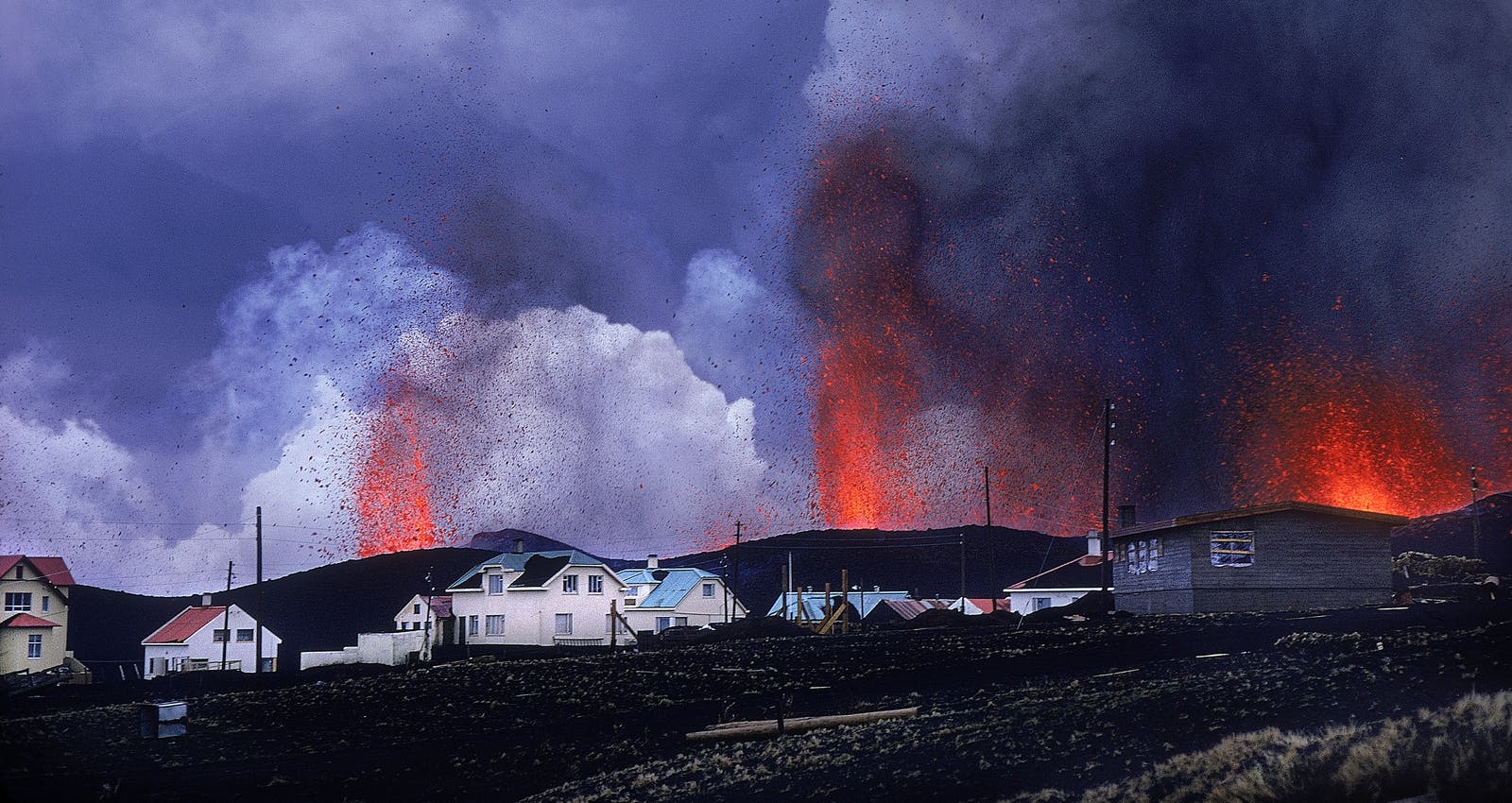
Eldfell Eruption of 1973
Eldfell, which means Hill of Fire in Icelandic, is a volcanic cone that reaches over 200 metres high. Eldfell is a volcanic cone on the island of Heimaey, on the Vestmannaeyjar archipelago in south Iceland.
It was formed during the 1973 volcanic eruption on Heimaey, which came without warning and displaced more than 4,000Icelanders. The effects were felt around the island.
When Has Eldfell Erupted Throughout History?
The most notable eruption associated with Eldfell is the eruption that burst out on the night of January 23, 1973. The eruption surprised the inhabitants of Heimaey, as there were no signs of imminent volcanic activity before the eruption.
How Long Did the 1973 Eruption Last?
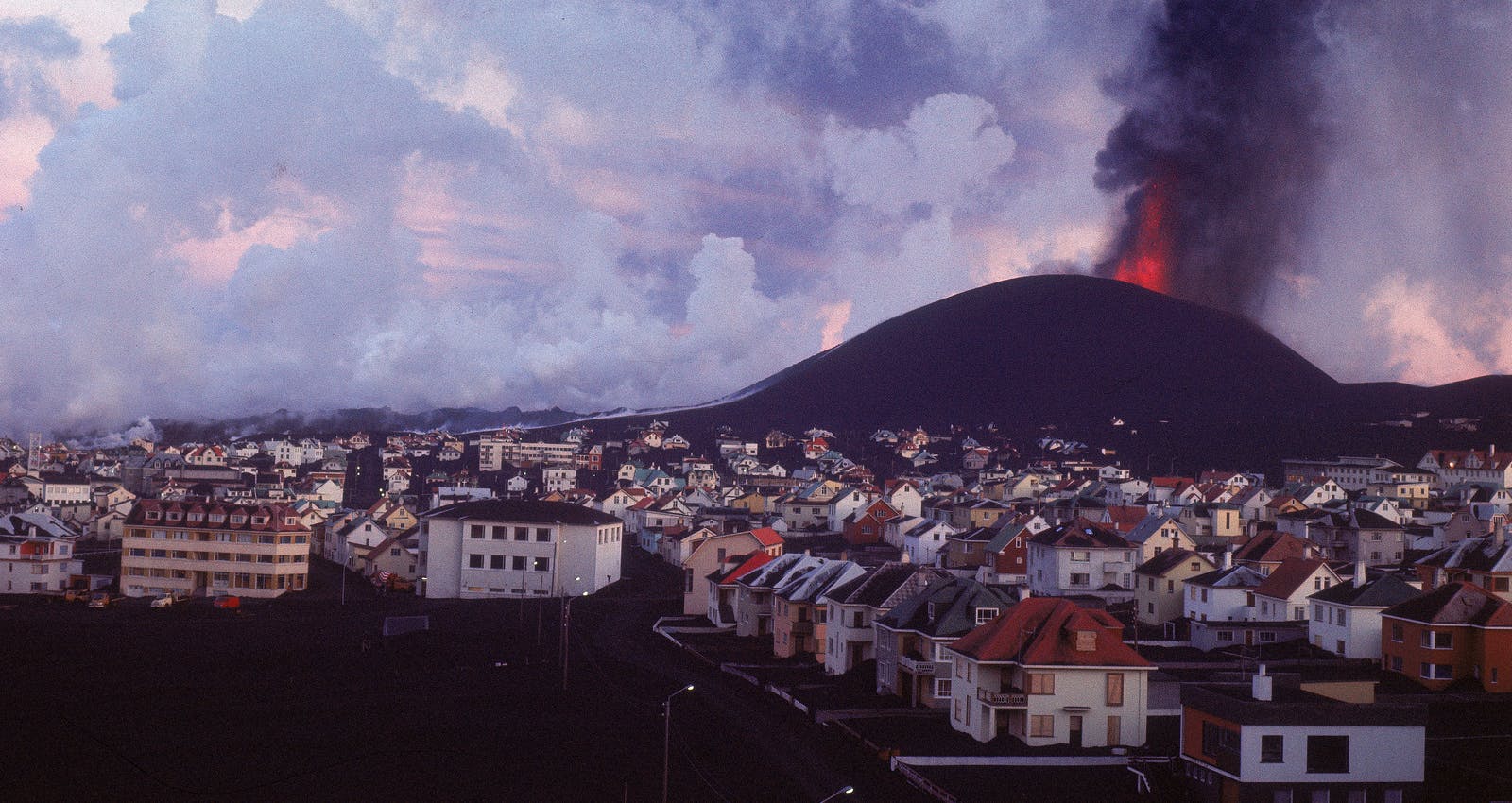
The eruption lasted about five months, ending in July 5 1973, during which Eldfell's cone grew substantially. The cone itself reaches a height of approximately 200 metres. The lava that flowed from the eruption covered a significant part of the town's eastern part, even forming a new coastline. The eruption displaced thousands of Icelanders, who sought refuge in other parts of the island.
If you’re wondering how recent eruptions compare, our complete list of active volcanoes Iceland provides detailed insights and updates.
Did Anyone Die in the 1973 Eruption of Eldfell?
Most of Heimaey's residents left by boat, and fortunately, there were no deaths. However, the eruption did have dire consequences. Ash from the eruption fell for weeks, destroying homes, livestock, and personal possessions.
Is Eldfell Active?
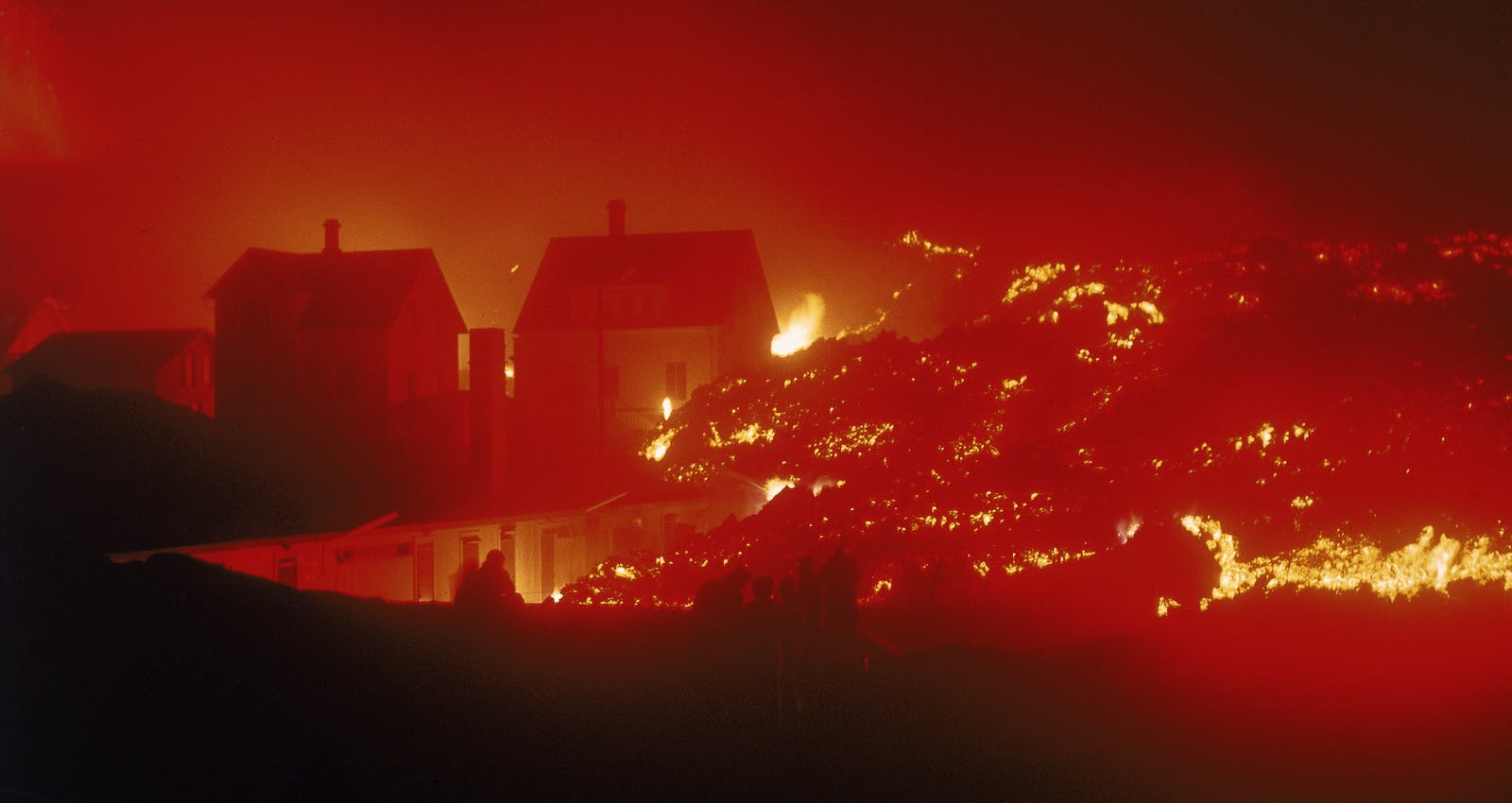
Eldfell is considered an active volcano, but there are no indications of an imminent eruption.
How to Get to Eldfell?
Travellers can take a 30-minute ferry ride from Landeyjaharbor in the southern town of Hvolsvöllur to Heimaey to get a close look at Eldfell, which is possible to hike. Always check the ferry schedule ahead of time to see any changes, and be sure to check the weather and road conditions.
How Long Does it Take to Hike Eldfell?
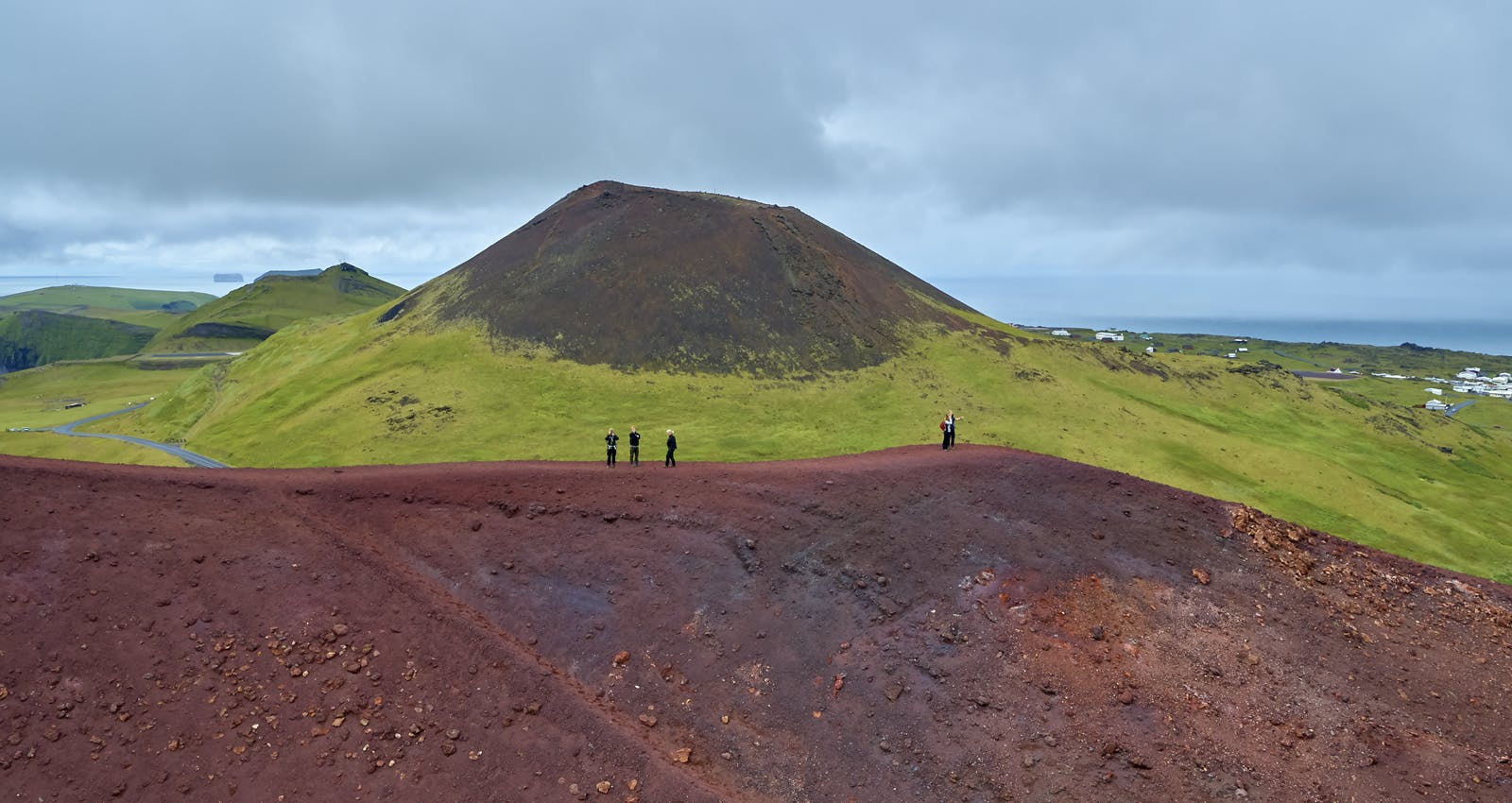
Walking up Eldfell is a lovely way to spend a few hours in the Westman Islands. This is a rare opportunity to hike on a volcano that erupted less than 50 years ago. The earth is still warm enough in places to bake bread. The easy hike on the 220-metre-high volcanic cone has a well-marked path from the trailhead to the top. You can walk to the trailhead from town, and on clear days, you have an outstanding view of the town.
Safety information
Before heading out on a hike in Iceland, make sure to check the weather and road conditions. Iceland's weather can be unpredictable, and you must be prepared for outdoor activities. Make sure you are dressed for the weather, have food and water for the hike, sturdy hiking boots and a charged mobile phone.
Where Can You Learn About Volcanoes in Iceland?
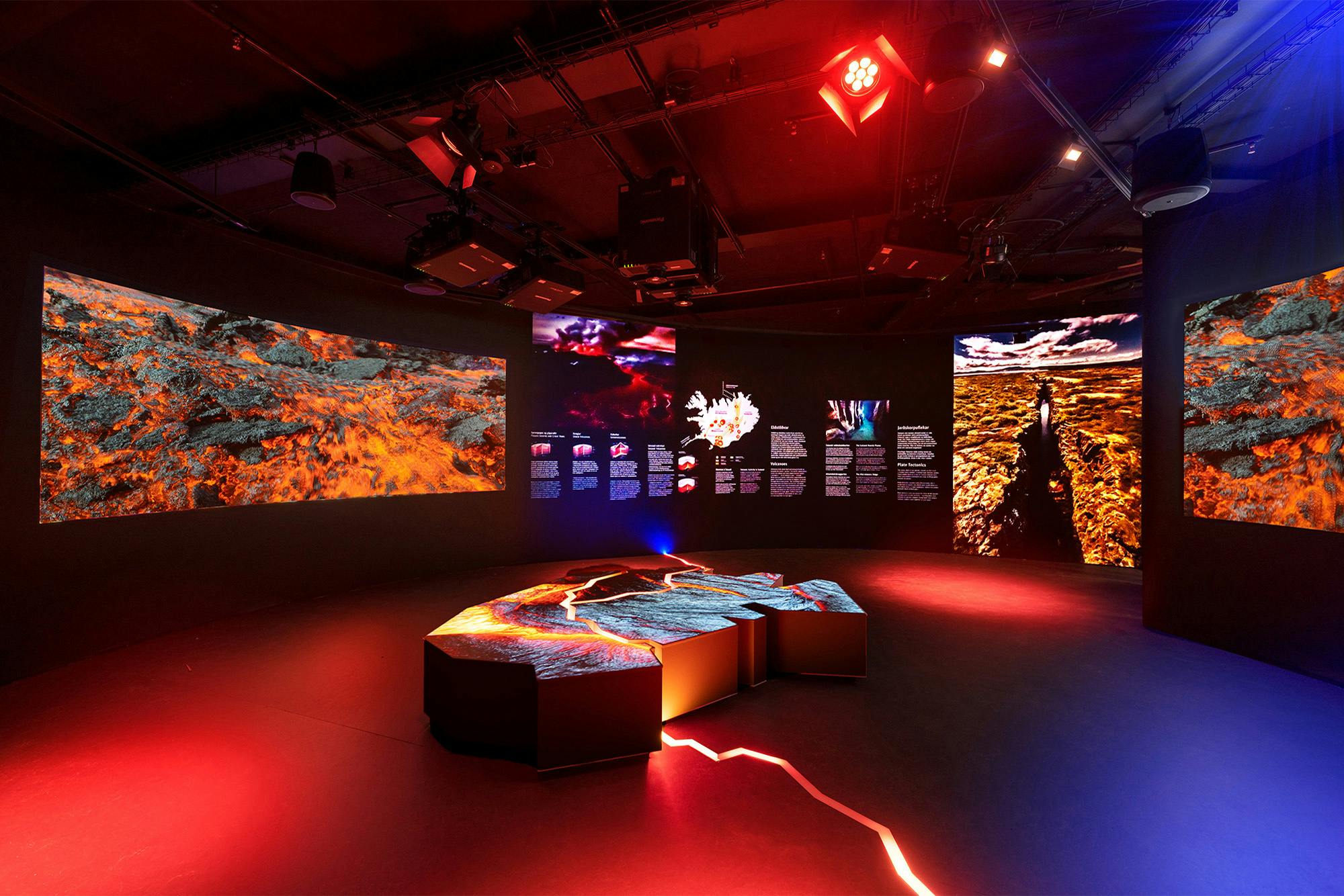
Visitors to Heimaey can explore the Eldfell volcano and learn about the eruption's impact through local museums and exhibits.
In Reykjavík, Perlan's Forces of Nature exhibition allows guests to feel the power of volcanoes, earthquakes, and geothermal energy that powers the island. Guests will learn that volcanoes form when heat and pressure build beneath the earth's surface. The earth's weak points tend to be along fault lines where tectonic plates converge or diverge, as in Iceland's case.
Perlan's exhibition shows that volcanic activity in Iceland is so diverse that researchers typically speak of "volcanic systems" rather than individual volcanoes. The island has 30 active volcanic systems, each with many types of volcanoes.
FAQ
What would happen if Eldfell erupted?
Volcano systems are monitored closely in Iceland by the Icelandic Meteorological Office. Scientists follow earthquakes and any indication of an imminent eruption. If an eruption is likely, warnings and alerts are issued, roads would potentially be closed to the area, air space cleared, and tours cancelled. There is no need to feel uneasy about visiting a volcano in Iceland, as eruptions don't surprise the island.
Is Eldfell safe to visit?
Eldfell is safe to visit, and there are different ways to see the volcanic cone. Travellers can take boat trips around the area, and it is also possible to hike on Eldfell.







